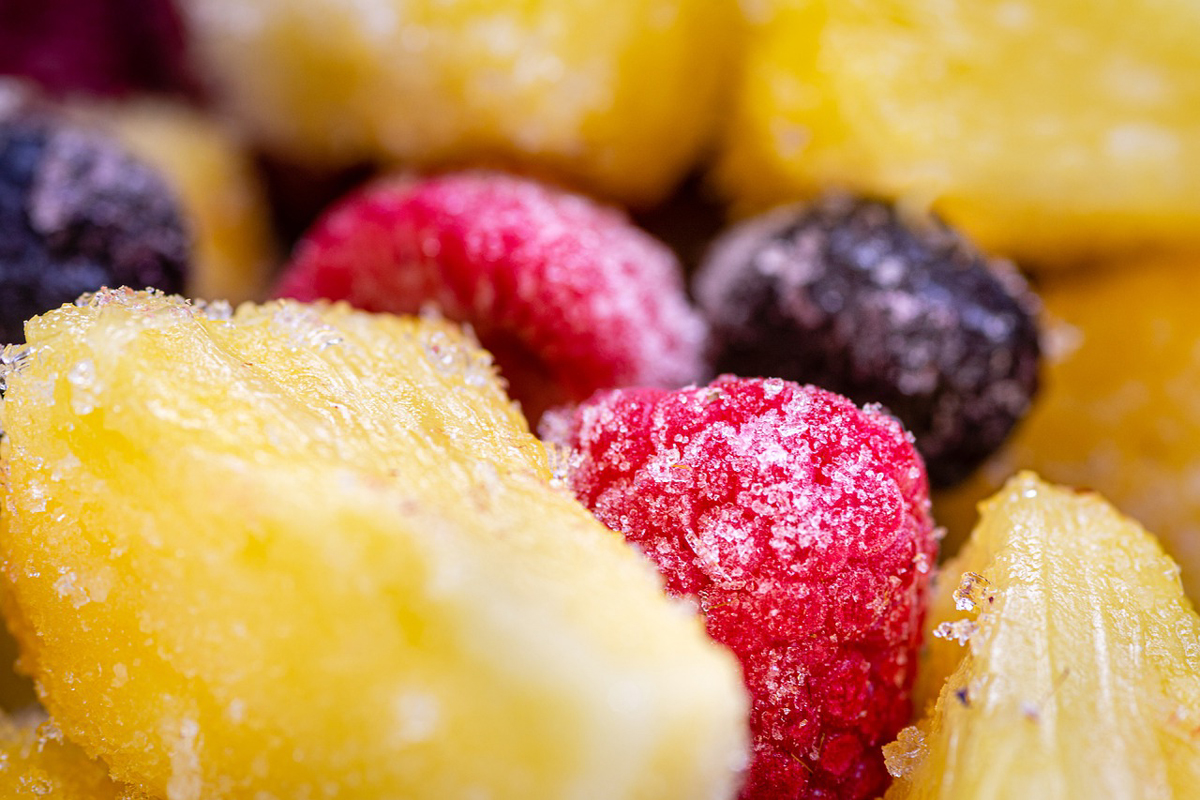Home freezing fresh foods is an excellent way to preserve essential vitamins, minerals and nutrients. Follow a few basic tips to achieve the greatest success in your home freezing program.
Choose the correct type of container for freezing foods. Foods in the freezer should have proper packaging to protect flavor, color, and moisture content and nutrition value. The type of freezer container depends on the type of food you are freezing and personal preference. A good rule to follow is not to freeze fruits and vegetables in containers with a capacity over one-half gallon. The reason for this is that foods in larger containers freeze too slowly and will result in an unsatisfactory product.
When you choose a freezer container look for the following characteristics:
- Moisture vapor resistant
- Durable and leak-proof
- Not become brittle and crack at low temperatures
- Resistant to oil, grease or water
- Protect foods from absorption of off flavors or odors
- East to seal
- Easy to mark
For home use there are two types of packaging materials:
1. Rigid containers
2. Flexible bags or wrappings
Rigid containers that are made of plastic or glass are appropriate for all packs and are especially good for liquid packs. Do not use cardboard cartons for cottage cheese, ice cream and milk for long term freezer storage. They are not sufficiently moisture vapor resistant. They can be suitable if lined with a freezer bag or wrap.
A regular glass jar will break easily at freezer temperatures. If you use a glass jar, use wide mouth dual purpose jars that are made for freezing and canning. If you use a standard canning car with a narrow mouth, leave extra headspace to allow for expansion of foods during freezing. If you do not allow for expansion the liquid can cause the jars to break at the neck. You will have to thaw some foods completely before removing them from a jar.
Use bags and sheets of moisture vapor resistant materials and heavy duty aluminum foil for dry packed vegetables and fruits, meats, fish or poultry. You can also use bags for liquid packs. To protect the bags and sheets against tearing and to make stacking easier, use protective card board cartons.
Review the following headspace allowances between packed food and closure:
- Liquid Pack* using a container with wide top opening: Pint size: ½ inch; Quart size: 1 inch
- Dry Pack** using a container with wide top opening: Pint size: ½ inch; Quart size: ½ inch
- Juices using a container with wide top opening: Pint size: ½ inch; Quart size: 1 inch
- Liquid Pack* using a container with narrow top opening: Pint size: ¾ inch; Quart size: 1 ½ inch
- Dry Pack** using a container with narrow top opening: Pint size: ½ inch; Quart size ½ inch
- Juices using a container with narrow top opening: Pint size: 1 ½ inch; Quart size: 1 ½ inch
*Fruit packed in juice, sugar, syrup or water; crushed or pureed fruit
**Fruit or vegetable packed without added sugar or liquid.
Freezing is an excellent way to preserve most of the quality of fresh products. It does not improve the flavor or texture of any food. Packaging and appropriate freezing procedures is essential to maintain the highest quality.
Storage times listed below are approximate months of storage if the food has been prepared and packaged correctly, then stored in the freezer at or below 0 degrees F. After the times listed, the food should still be safe to eat, but lower in quality. For best quality you should store foods in the freezer for shorter periods of time.
- Fruits and Vegetables: 8 to 12 months
- Poultry: 6 to 9 months
- Fish: 3 to 6 months
- Ground Meat: 3 to 4 months
- Cured or Processed Meat: 1 to 2 months
Other factors that affect the shelf life of frozen foods are:
- Properly blanching
- Was food packaged in appropriate materials?
- Was the food stored at the acceptable temperature?
Additional freezing tips:
- Freeze and store food at 0 degrees F or lower for the best quality
- Freeze foods as soon as they are packed and sealed
- Do not overload the freezer with unfrozen food
- Leave space among new, warm packages to allow cold air to circulate freely around them.
- After food is frozen, stack and store the packages close to together if desired.
- Rotate foods so that you use the older items first
Source: The National Center for Home Food Preservation
The Author:
Connie Limon. Visit http://smalldogs2.com
Photo. Melk Hagelslag
Source: EzineArticles.com
